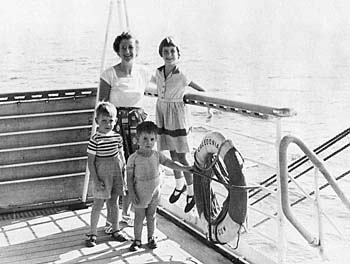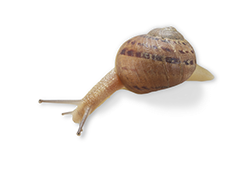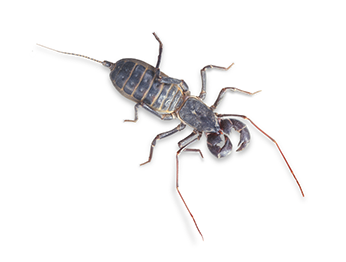
Nic Bishop
Author and Photographer
of Nature Books for Children
About Me


Our family moved a lot when I was young. We traveled from England to Bangladesh when I was three, where my father worked as a biology teacher for the British Council. I was too young to remember many details about Bangladesh. But some events are still fixed in my memory, especially those involving nature. For example, there was the time our neighbor shot a panther in the jungle just behind our house. To me it looked like an overgrown pussycat and I was very sad to see its limp body. I also remember feeling sorry and a little scared of the huge tiger-skins that hung in our neighbor’s house, especially since I knew some had been man-eating tigers that lived nearby.
At nights I would fall asleep to the calls of jackals running past my bedroom window, and one morning I woke to find a slow loris on our verandah. It’s a very furry relative of a monkey and looked like a wonderful living stuffed toy. My mother has since told me of other animal incidents, like the banded krait (also called the one-minute snake) that was discovered in the playground and the tiger paw prints we found in our garden one day.
I started taking photographs at age nine when I borrowed my sister’s box brownie camera. We lived in Khartoum in the Sudan at that time, and it was an exciting place for a boy. I loved to explore the winding streets of the souk (bazaar). There were dark-skinned traders from the south and Arab traders from the north. There were tiny shops stacked with cheap watches, silver jewelery, ancient muskets, elephant skin shields and old spears. It seemed almost anything could be found in the souk. To me, it was filled with the adventure of Africa.
When I was 14 we moved to Goroka, in the Highlands of New Guinea, where I home-schooled for 4 years while attending the local high school (being the only white school-boy) part-time. I used to go “walkabout” at weekends to local villages, persuading the elders to take me into the mountains on hunting trips for birds of paradise. My guides were intent on shooting them with their bows and arrows, while I was hopeful of photographing them with an old camera. In time, I became fluent in Pidgin English and spent hours asking the elders about their stories, and what stone-age life was like before they first met Europeans.
When I was 16 and 17, I did some long hiking trips, crossing mountain ranges and rivers into unmapped regions. I carried a camera and tape recorder to record customs, music and folklore of the people I visited. Many had never heard a tape recorder before (or seen a teenage white boy for that matter) so the novelty would draw an entire village into one hut for an evening of song and music, punctuated by fits of laughter as individuals recognized each other on tape. I was entirely dependent on the generosity of the villagers on these trips. They were always kind to me and let me stay in their thatch houses. The older women would chuckle with maternal dismay that I wasn’t safely at home with my parents. But, after a week or two, I would turn up back at home with assorted fleas and sometimes strange diseases that would have my mother worried and doctors scratching their heads.
I completed my training in biology in England in 1977, and afterwards traveled for months by train, bus, rickshaw and antique ferry from London to Bangladesh; and then flew to New Zealand, where I felt I’d arrived in paradise. Apart from a year traveling across the Australian outback (snakes, crocodiles and other adventures), I settled in New Zealand for 17 years and became a citizen there. I started a PhD, but spent almost every spare moment hiking, mountaineering and exploring the alpine wilderness of New Zealand’s Southern Alps. It was one long wonderful adventure, filled with awesome landscapes and anxious moments with flooded rivers, ice avalanches and high winds.
I took a succession of cameras on those trips and after a few years had enough good photos for my first book, called “Untouched horizons” (1989), which was about the wilderness landscapes of there South Island. This was followed by several other books for adults about natural history, which I both wrote and illustrated.
Although I had never considered doing children’s books, it became evident that young readers liked some of my photographs, especially those of small animals like frogs, insects and spiders. My biological training and upbringing by biologist parents had helped spark an interest in the smaller animals that others sometime overlook. So perhaps it was not surprising that I had a call from a children’s publisher asking me to produce nonfiction books for schools. They explained how some children do not respond well to fiction books and their interest in reading can languish as a result. I realized, on looking back to my early school years, that I was one of those children. Reading never held my interest until much later when I discovered books that were about the real world of science, nature and adventure.
Switching to children’s books was quite easy for me. As a writer one has to work with a reduced palette in terms of vocabulary and sentence construction. But, as a photographer, very little change is needed. Even the youngest children can interpret sophisticated images of nature. So, I invest all the same skills and efforts in photographing for children that I do for adults. The work is every bit as rewarding, and I’m happy to say, a lot more fun.
In the 90's my wife was offered a research position at Harvard University, so we packed our bags once more and moved to Boston where i have worked exclusively on children's books. Each new title is a whole new adventure for me. I have been lucky to explore many new places while taking photographs. One book even took me back to New Guinea, for the first time in 25 years!

Text and Images - Copyright Nic Bishop